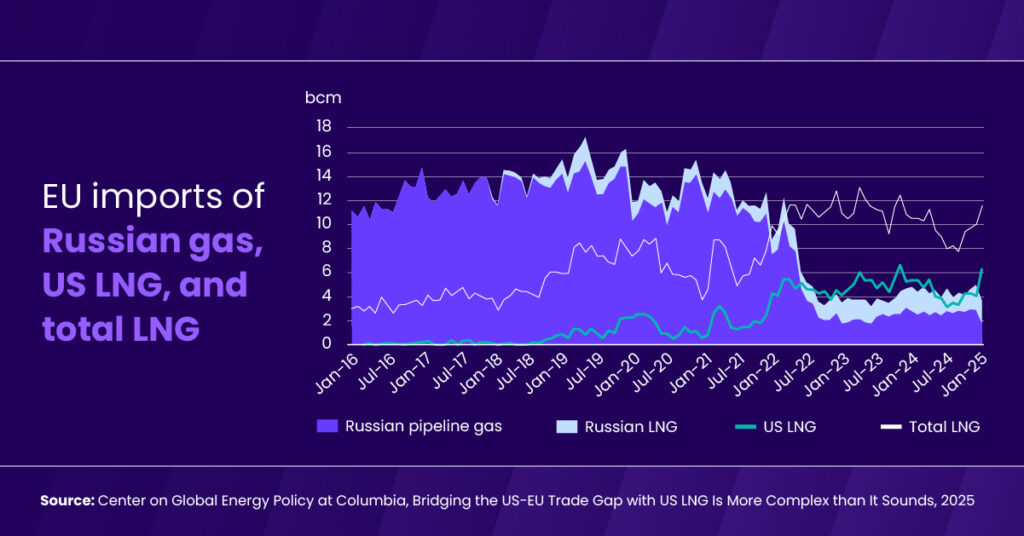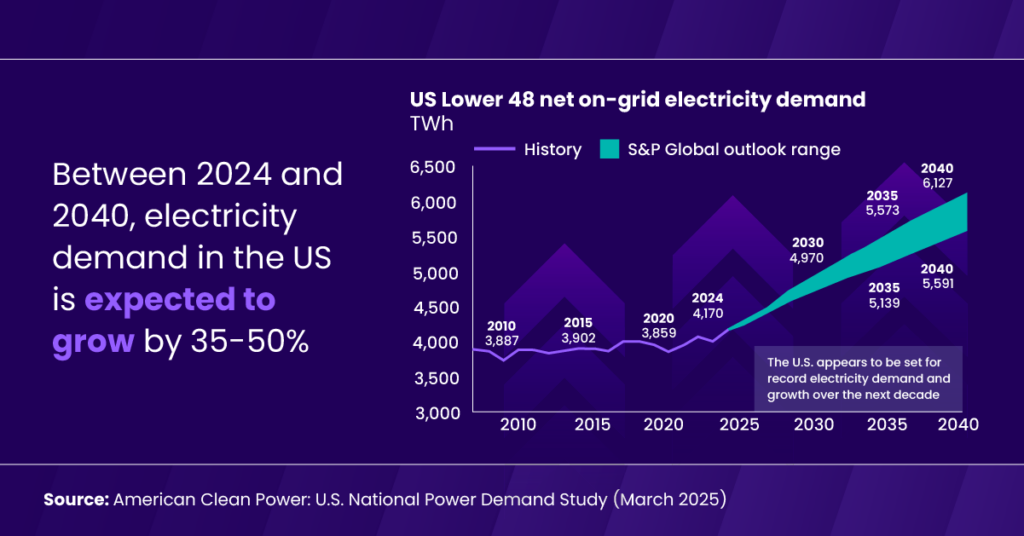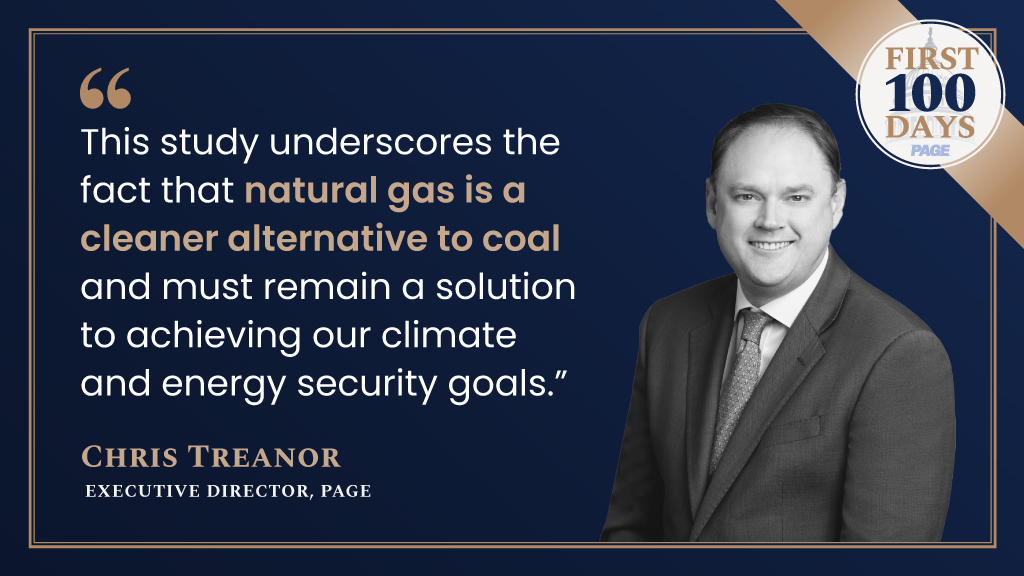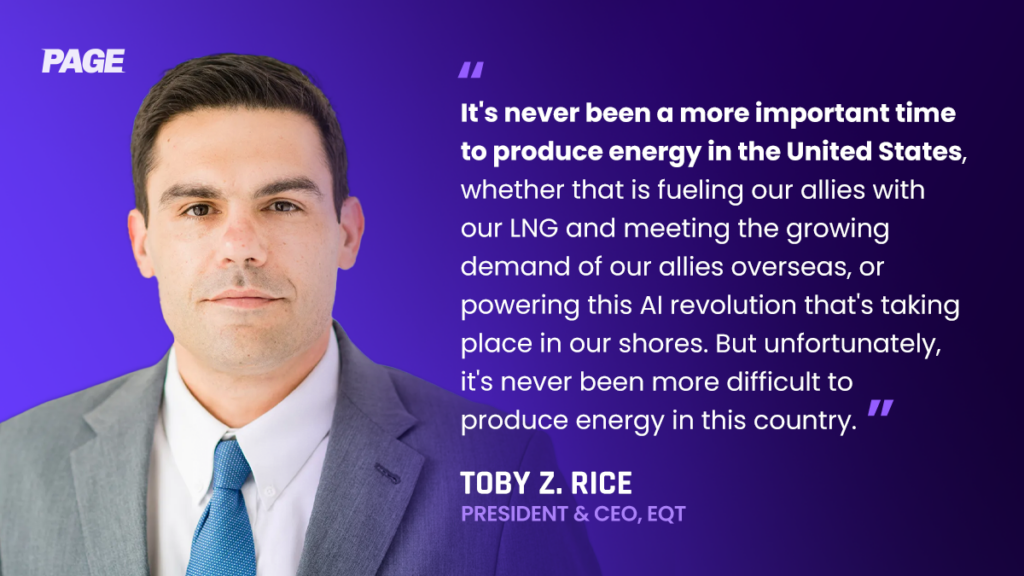Unlocking America’s Energy Potential: Why Permitting Reform is the Key to Affordable, Cleaner Energy
America’s energy system is at a crossroads. Surging electricity demand from AI, record-high energy prices, and urgent calls from our European allies for U.S. liquefied natural gas (LNG) underscore the need to build energy infrastructure quickly. Despite our abundant resources and innovative spirit, our ability to meet these challenges is limited by a broken system that thwarts the development of the infrastructure needed to keep up.
The High Cost of Delay: Bottlenecks and Affordability
Right now, millions of Americans are feeling the squeeze of higher energy costs. Electricity rates are up 6.7% year-over-year, and utility gas bills have surged nearly 14%, outpacing overall inflation. Meanwhile, satisfying AI’s energy demand and supplying LNG for our European allies are non-negotiable national security priorities.
While we have an abundance of energy resources and technologies to meet the moment, our inability to move infrastructure projects from blueprint to reality is a major obstacle. On average, approvals for energy projects take 4.5 years, while transmission projects can take nearly a decade.
But the real problem isn’t just slow approvals, it’s a broken regulatory system. Projects often encounter layers of duplicative reviews and legal delays weaponized to exhaust developers rather than resolve genuine concerns. In fact, permits under the National Environmental Policy Act (NEPA) are litigated 56% more than a decade ago, despite 80% moving forward without modification. The result is that major infrastructure projects—and the economic and energy benefits they offer—do not come to fruition.
Permitting Reform: A Bipartisan Solution for America’s Future
Momentum is building in Congress to tackle the roadblocks holding back our progress with pragmatic, bipartisan legislation. The Standardizing Permitting and Expediting Economic Development (SPEED) Act, introduced by Rep. Bruce Westerman (R-AR) and Rep. Jared Golden (D-ME) is awaiting markup in the House, and the Problem Solvers Caucus released a bipartisan framework to modernize permitting, expand energy production across all sectors, and provide the certainty investors need to build in America.
Rep. Golden has said, “By reforming NEPA while standing firm in our commitments through the Clean Air and Clean Water Acts, we can be good stewards of our environment while ending a permitting status quo that is onerous, overly complex and ripe for litigation abuse.” And Senator Mike Lee, Senate Energy and Natural Resources Chair recently stated, "It's time for NEPA reform" and "permitting reform more broadly".
These proposals demonstrate a growing bipartisan recognition that the current system is unsustainable, which was echoed in a recent letter to Congressional leaders from more than a dozen Governors urging technology-neutral reforms to the federal permitting process. Ultimately, Congress must deliver comprehensive permitting reform that unlocks energy and infrastructure investment at the scale required to meet rising demand, lower costs, and strengthen U.S. energy security and that of our allies.
PAGE’s Permitting Principles: A Roadmap for Progress
To guide Congress and policymakers towards reform, the Partnership to Address Global Emissions (PAGE) has developed a set of actionable principles that should be included as a part of permitting reform legislation:
- Strengthen Judicial Review Safeguards: Clear rules for how and when courts review permitting decisions to protect projects from open-ended litigation that can delay investment and undermine competitiveness. At the same time, they preserve accountability by ensuring agencies follow the law and guarantee due process for communities and stakeholders.
- Streamline Documentation and Narrow Scope: By narrowing reviews to what is legally required and eliminating duplicative or speculative analyses, agencies can focus resources on assessing genuine impacts.
- Establish Clear and Enforceable Timelines: Clear deadlines provide the certainty needed to plan projects, secure financing, and deliver benefits on schedule. Enforceable timelines also help reduce cost overruns and protect consumers from higher energy prices caused by unnecessary delays.
- Streamline LNG Export Approvals: Expediting LNG approvals enhances U.S. global leadership by supporting our allies, bolstering energy security, and reducing emissions.
- Modernize Clean Water Act and Endangered Species Act Processes: Updating Clean Water Act (CWA) and Endangered Species Act (ESA) reviews preserve strong environmental protections while eliminating duplicative permitting and ensuring infrastructure needed for affordable, reliable energy can advance.
The Path Forward: America Needs Action Now
Americans deserve a modernized permitting process. Every delay means higher bills for families, potential energy insecurity and a weaker position for America on the world stage. The stakes are too high for more gridlock.
PAGE urges immediate action to enact durable, bipartisan permitting reform that will unlock investment, lower costs for families and businesses, and ensure lasting U.S. energy security. Let’s unlock our energy potential and deliver the progress our nation deserves.





